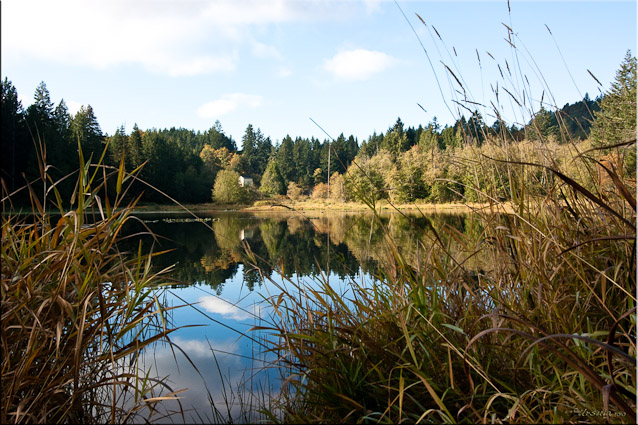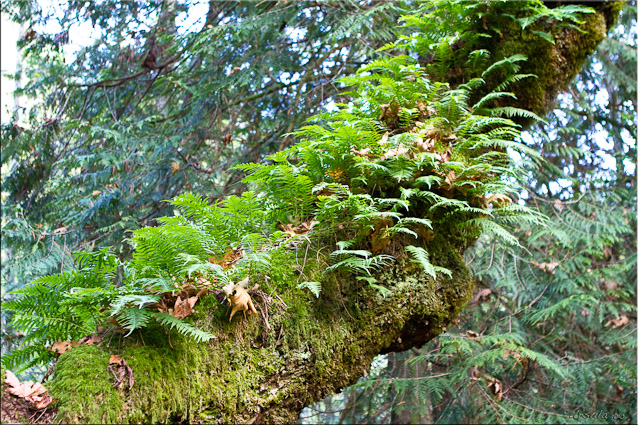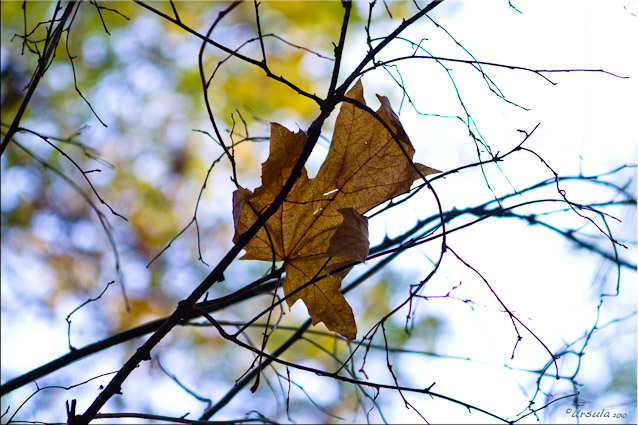The weather in the Georgia Strait region of BC, Canada has been interesting the last two weeks: too cold for most flowers (and me!) but not cold enough to bring out all the oranges and scarlets that autumn is famous for. There have been some sunny spells which don’t actually warm, some icy winds that seem to have blown straight in from Alaska, some bone-chilling rains and some fogs; just about everything except frost or snow. I guess “changeable” would describe the prevailing conditions.
We’re in British Columbia at the moment, sharing our time between the east coast of Vancouver Island and the west “Sunshine Coast” peninsula on the mainland. We are here principally to visit family and to try to hone our sailing skills. We’ve had a couple of nice days on the water (more on that next week) but we’ve had a slight problem: if there is no wind and/or no visibility, then sailing is a bit of a bust! So, we’ve spent a lot more time ashore than we expected to.
This is not at all a bad thing when you are docked near areas of beautifully maintained trails that meander through mixed forests of coniferous and deciduous trees. There are few things I enjoy more than walking, and walking through the woods either side of Georgia Strait has been a sensory joy! The paths are soft underfoot in most places, with only rare birdsong interupting the quiet. The temperate rain forest smells of moss and moisture, overlaid with the sweet smells of cedar, fir, and spruce. In many places, soft autumn light filters through the trees; in other places, the angled light bounces brightly off ponds, lakes or coastal waters. The fading colours of dying leaves intermingle with evergreen greens and the bright reds of holly berries and rosehips.

Cottle Lake, Linley Valley Park, Nanaimo, BC

Ferns, Moss and Cedar in the Temperate Rain Forest of Linley Park

"The Last Leaf" ~ A Lonely Maple Leaf

"The Fallen" ~ Trails Include Elevated Walkways and even Stairs where Needed!

Fir Boughs and their Cones Smell like Christmas!

Pathway ~ Newcastle Island Marine Provincial Park

Yellow Maples Catching the Autumn Light

Another Reminder of Christmas ~ Wild Holly Berries

One of the 8.8 Meter 40 Tonne Sandstone Columns Raised from the Sunken Zephyr

Tree Fungus : Sherman Walk, Smuggler Cove Provincial Marine Park

Beaver Dam Damage, Smuggler Cove Provincial Marine Park

Beaver Pond: Sherman Walk, Smuggler Cove Provincial Marine Park

Bullrushes in the Water

Leave Your Mark! Initials in the Arbutus

Moss on the Shady Forest Floor ~ Smuggler Cove Provincial Marine Park

Pine Cone

Uprooted Stump ~ Smuggler Cove Provincial Marine Park

Jay High Up in the Trees... Not a Good Shot, but the ONLY Bird I got Remotely Close to!!

More Autumn Colour: Maples Turning

Rose Hips ~ Sargeant Bay Provincial Park
 I hope you are enjoying the colours of your season, where ever you are.
I hope you are enjoying the colours of your season, where ever you are.
Happy Rambling!

























.png)


beautiful… you have such a way of describing the places you go… makes me (almost) feel like I’ve been there…thanks for the share!
Thanks, Signe! We’ve been having fun. 🙂
Great fall colours
[…] the late 1800s, Newcastle Island was a source of architectural sandstone for large buildings (see: Walks in the Woods), and from the 1920s, pulp stones were quarried for the pulp and paper […]